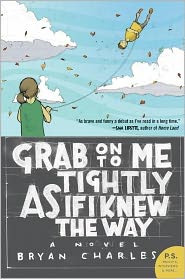I just finished reading “Harry Potter and the Deathly Hallows” again and while normally I would sit down and write a review of it, for a book like this I just can’t. Even if I could ignore all my nostalgia for the book and concentrate on it’s quality it would be pointless since either you’ve enjoyed the Harry Potter series enough to read the final installment or you’re a naysayer who never made it past book two. Instead, here is my humble attempt at a tribute.
I am a Harry Potter fan. There are very few readers my age who aren’t. Though the Harry Potter series has been touted as children’s books that were able to break free from their target audience and appeal to a wide range of ages, it can’t be denied there is also a very generational aspect to their popularity. Though I’m far from the biggest fan (as my conspicuously Harry Potter paraphernalia free room can attest to) I grew up with Harry, Hermione, Hogwarts, and everything else in the series.
To the best of my memory I was first exposed to the series when the first and second books were given to me as a gift during the Christmas of 1999. Next to a super awesome metal slinky one of my friends gave me for my seventeenth birthday, they're the best gifts I’ve ever received. The books were beyond my reading level at the time, so I sat down with my family while my dad read them out loud. It was a tradition we would keep all the way until the last one was released in 2007.
From the start I absolutely loved them. At the risk of sounding like a hipster, I’ll admit that this was before they had been commercialized and there was no merchandise for them to be found, so with special paper, a printer and an iron, I made my own shirt emblazoned with the cover of “The Chamber of Secrets.” I wore it with pride.
I remember going to the book releases. One came out on the morning before a road trip, another one released while I was sitting in a Peruvian airport and I bought the sixth one while in Canada so now it looks shrunken and out of place, squeezed between the massive American editions.
As for the movies, though never quite as enchanting as the books, were still thrilling parts of my childhood. That’s why, as I laughed with my friends last Thursday night while waiting for the clock to hit 12, I couldn’t help feeling a bit of sorrow, because I knew a prolonged episode in my life was ending. Feel free to call that notion ridiculous. Feel free to scoff at my attachment to a fictional world. But when it comes down to it, the magic of the Harry Potter series isn’t in its spells or potions but in the knowledge that however horribly wrong things in real life go there is always a world I can close my eyes and return to that feels like home.
For me, mischief will never truly be managed and for that, I’m glad.








